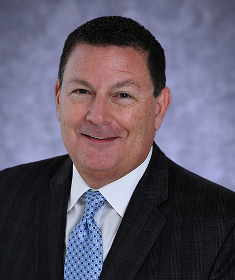Que font de mauvais font 82 % des dirigeants ?
5 pratiques de leadership essentielles pour une haute performance durable

It’s disconcerting to consider that merely 18% of managers demonstrate a high level of talent for managing others, because the flip side of that statistic means 82% of managers are not effective at leading people. While this statistic is startling, it is really not hard to understand.
The Challenge
When you talk to mid-level leaders and ask them to look back over their careers, most would tell you they didn’t necessarily aspire to become a manager. Their focus was on their chosen function (accounting, engineering, operations, etc.), they performed very well, and that “got them promoted.” What’s the problem?
If individuals have given little thought to becoming a manager, it is very likely they have given little thought to what it means to be a leader. These managers performed well enough as a first-level manager to follow the natural progression to move into a mid-level leader role. The problem is they arrive with little or no idea of what it takes to succeed at that next level. In a mid-level leader role, just achieving performance goals is not sufficient to be effective. The real challenge is how to lead people to perform in a way that increases their ability to do it themselves.
Mid-level leaders need a clear vision on what they are trying to accomplish as a leader, as well as a solid game plan to utilise their talents to achieve and sustain that vision.
Performance with Fulfilment
There are many things a leader can do to drive high performance—in the short term. To achieve sustainable high performance over time, employees must find a sense of purpose and meaning in their performance and believe they are contributing value to both themselves and the organisation. We call this performance with fulfillment.
The 5 Essential Leadership Practises
Research has shown that all employees, no matter what generation, have five questions that need to be answered before they experience true performance with fulfilment. We have converted these questions to five essential leadership practises: Direction, Goals, Feedback, Recognition, and Support.
These key leadership practises provide the leader with a process to create a positive work environment in which performance with fulfilment flourishes. Being intentional in using all five practises engages others and creates a two-way dialogue around the “what” and the “how,” and, most importantly, the “why.”
1. Direction—Where are we going?
In the context of driving strategy and creating an environment of performance with fulfilment, we express direction as an equation. Direction equals vision plus strategy.
Vision is what the company aspires to be. It may be described as vision, mission, purpose, etc. Vision tends to be very stable. Once an organisation has defined who it is and where it wants to go, it tends to keep that big picture intact.
Strategy is the blueprint, or broad plan, for achieving the company’s vision. If the vision reflects what the company strives to be, the strategy reflects how the company is going to get there. The strategy must shift as environmental drivers change, so it tends to be very flexible.
2. Goals—What is expected of me?
Goals are the first step in rationalising the direction. A goal is an outcome or work unit that an individual is expected to deliver for the company to help it achieve its direction. Obtaining commitment to goals is critical, particularly since goals help drive the company in the direction it needs to go.
For people to be committed, they need to be inspired. A leader who is clear on their team’s fulfilment can create a dialogue about what is compelling and why, building the commitment needed to achieve challenging goals.
3. Feedback—How am I doing?
In many companies, people understand the company’s direction and their own goals. Their goals are aligned with the direction, but they still struggle to execute on the strategy. Effective feedback is key to bridging this gap and ensuring that everyone is doing what they need to do to help the company deliver the promise of its direction. Feedback is a key ingredient in ensuring that people experience performance with fulfilment.
4. Recognition—What is in it for me?
Recognition helps people feel valued for their contributions. It is the fuel to maintain people’s interest and motivation for ongoing effort. To advance a goal, leaders need to understand the types of recognition that are most compelling to those responsible for the goal. By providing meaningful recognition to teams and individuals, as appropriate, leaders can foster performance with fulfillment.
People want to know that when they perform well, others see and appreciate their accomplishments. Recognition is how leaders can demonstrate this appreciation and show people that their contributions matter.
5. Support—Where do I go for help?
Support means taking action to strengthen the ability of the work unit(s) to achieve critical goals with a high degree of both performance and fulfillment. The mid-level leader is the person in the organisation who spans the boundaries of different functions and departments. The leader’s role is to ensure productive relationships within their span of control and with other functional areas. In some situations, they may need to negotiate with other areas, or may need to assist their work unit as they do so. The leader must also anticipate potential challenges, and then address them before they become barriers.
Sustainable Performance: What’s Required?
As leaders work to help the organisation perform at its best, they also need to understand that employees want to be involved in work that is meaningful and makes a difference. Highly effective leaders have the perspective to achieve performance with fulfilment for themselves and their team, as well as model the five key factors to build capability in their team’s ability to do it themselves. What are you doing to ensure the leaders in your organisation are on the path to become purpose-centred leaders?
Pour en savoir plus, contactez Wilson Learning au 01 47 51 70 70 or rendez-vous sur notre site Internet at WilsonLearning.com.








 Merci de remplir ce formulaire afin de télécharger Que font de mauvais font 82 % des dirigeants ? | 5 pratiques de leadership essentielles pour une haute performance durable».
Merci de remplir ce formulaire afin de télécharger Que font de mauvais font 82 % des dirigeants ? | 5 pratiques de leadership essentielles pour une haute performance durable».



